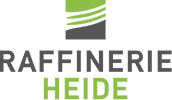At the beginning of May, leading company representatives came together for the second partner meeting of the real laboratory WESTKÜSTE100. This time, the consortium met at the Lägerdorf cement plant at the invitation of network partner Holcim (Deutschland) GmbH.
Heide / Lägerdorf, May 2022 – After their first major meeting in Heide last fall, the decision-makers of the consortium held a spring meeting at the Holcim plant in Lägerdorf. Company representative Arne Stecher, responsible for the decarbonization of all German Holcim cement plants, and Dr. Sandra Niebler, Head of Commercial and Economics at Raffinerie Heide GmbH, welcomed the consortium partners. The refinery is also the coordinator of the network and represents the real laboratory towards the funding body. Arne Stecher and Dr. Sandra Niebler confirmed the need for the development of a future hydrogen economy. Both emphasized the optimal natural and economic structural conditions on the west coast of Schleswig-Holstein.
At the partner meeting, the current progress of the project work, the time planning and, above all, the still outstanding legal framework conditions at EU and federal level were on the agenda. Preparations in all technical areas are in full swing. Planning for electrolysis, cavern storage and pipeline transport are on schedule.
Necessary changes in legislation, also known as regulations, are not the responsibility of the real laboratory, which disadvantageously are taking place less quickly than assumed by the consortium when preparing the project more than two years ago. The regulations determine the decisive basis for the implementation of the real laboratory. Significant investment decisions can only be made once the legal framework has been clearly defined at EU and federal level. “We here in the real laboratory WESTKÜSTE100 are ready to build up the hydrogen economy in order to promote the decarbonization of our industries. In order to actually be able to make our investments, politicians must provide the legal framework as quickly as possible,” says Dr. Sandra Niebler.
The assembly also decided to include four so-called associated partners in the project. These are companies and associations that will contribute their technical expertise to the real laboratory in close cooperation with the consortium partners.
After the meeting, the participants visited the Holcim cement plant and the Schinkel and Heidestrasse chalk pits. At the Lägerdorf site, Holcim is pursuing the goal of feeding the oxygen produced in the hydrogen electrolysis into the production process in the real laboratory WESTKÜSTE100 in order to provide ultra-pure carbon dioxide for the subsequent production of synthetic fuels based on methanol. Lägerdorf is set to become one of the world’s first net-zero cement plants in the near future.
The next and then third partner meeting of the real laboratory WESTKÜSTE100 will take place in the coming autumn.
Background: The project “Reallabor WESTKÜSTE100”
The WESTKÜSTE100 project is intended to create a regional hydrogen economy on an industrial scale in Schleswig-Holstein. The heart of the project is the research and development approach, primarily to produce green hydrogen from wind energy and to use the resulting waste heat and oxygen. In follow-up projects, the green hydrogen is to be used both for the production of climate-friendly fuels (synfuels) and fed into gas networks for heat supply. Hydrogen from electrolysis and unavoidable carbon dioxide from regional cement production in Schleswig-Holstein are used for the fuel production process.
Further information on the project can be found at www.westkueste100.de/en/.







